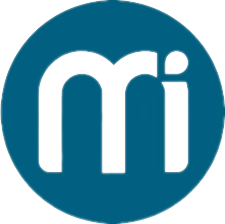AI EEG: The Role of AI in Reshaping Epilepsy and Seizure Diagnosis

Epilepsy affects millions of people worldwide, and accurate diagnosis is essential for proper treatment. Traditional methods rely heavily on human expertise in analyzing brainwave patterns, which can be both time-consuming and error-prone. As neurological data becomes more complex, healthcare providers need tools that improve speed and reliability.
The rise of AI EEG is transforming this landscape. By combining artificial intelligence with electroencephalography, researchers and clinicians can identify abnormalities faster, predict seizure risks, and personalize treatment options. This approach has the potential to change how epilepsy is diagnosed and managed in both clinical and research settings.
Understanding EEG in Diagnosis
Electroencephalography records electrical activity in the brain. For decades, neurologists have used it to identify abnormal brainwave patterns linked to seizures. The process, however, requires trained specialists who must manually review lengthy recordings. Misinterpretations can occur, particularly when abnormalities are subtle or resemble other patterns.
AI integration addresses these limitations. Algorithms can scan data continuously, highlight irregularities, and support physicians in decision-making. Instead of replacing medical experts, AI provides another layer of precision that reduces errors and improves efficiency.
How Artificial Intelligence Enhances EEG
Artificial intelligence processes data differently than humans. While neurologists interpret patterns visually, AI can evaluate massive datasets in seconds, detecting variations too small or too frequent to notice manually.
-
Pattern recognition at scale. Algorithms trained on large datasets can identify recurring signals that suggest seizure activity. This ability helps doctors detect cases earlier than traditional methods allow.
-
Continuous monitoring. AI systems can analyze EEG data in real time, alerting clinicians immediately when concerning patterns appear. This reduces response time during critical events.
-
Reduced subjectivity. Human interpretation varies, but AI applies consistent criteria. This consistency strengthens diagnostic accuracy and improves patient outcomes.
Applications in Epilepsy Diagnosis
Epilepsy presents unique challenges because seizures vary in frequency, type, and severity. AI applications offer practical solutions to these challenges.
-
Early Detection of Seizure Disorders
AI tools can detect abnormalities in EEG signals that may indicate epilepsy before full seizures develop. This allows for earlier diagnosis and treatment, reducing complications. -
Seizure Prediction
With continuous monitoring, AI can identify patterns that often occur before a seizure. Predictive systems could one day warn patients in advance, helping them avoid dangerous situations. -
Differentiating Seizure Types
Epilepsy includes multiple seizure categories. AI models can classify signals more accurately, allowing doctors to tailor treatment based on the exact type of seizure.
Benefits Beyond Diagnosis
The value of AI in EEG extends beyond identifying epilepsy. Its impact reaches treatment planning, monitoring, and research.
-
Personalized treatment plans. By analyzing individual brain activity, AI helps doctors select therapies most likely to work for a specific patient. This reduces trial-and-error prescriptions.
-
Long-term monitoring. Portable EEG devices combined with AI enable continuous data collection, giving doctors insights into seizure frequency and triggers outside clinical settings.
-
Research acceleration. AI speeds up the study of neurological conditions by processing large datasets quickly. Researchers can test hypotheses and discover patterns without years of manual analysis.
Challenges in AI-Driven EEG
Despite progress, challenges remain in applying AI to clinical practice. These issues must be addressed for widespread adoption.
-
Data diversity. EEG data varies between individuals, and algorithms must be trained on diverse populations to ensure accuracy across different demographics.
-
Integration into hospitals. Many clinics still lack the infrastructure to run advanced AI systems. Implementation requires investment in hardware and training.
-
Ethical concerns. Patient privacy must be protected, especially when sensitive brain data is stored or shared for AI model training.
The Future of AI in Neurology
The integration of AI with EEG is only the beginning. As technology improves, it could reshape neurology in several ways.
-
Home-Based Diagnosis
Portable devices with AI integration may allow patients to record brain activity from home. This would provide doctors with continuous data and reduce the need for repeated hospital visits. -
Neurofeedback Systems
AI-powered EEG could feed data into biofeedback tools, helping patients train their brains to avoid seizure triggers. This may open new therapeutic pathways. -
Global Access to Expertise
In regions with limited specialists, AI systems could help general physicians interpret EEG results accurately. This increases access to proper epilepsy care worldwide.
Collaboration Between AI and Clinicians
AI is not meant to replace neurologists but to strengthen their work. The best outcomes come from collaboration between technology and human expertise.
-
Neurologists guide AI model development by labeling data and identifying clinically significant patterns.
-
AI provides continuous support by handling repetitive data analysis, freeing doctors to focus on patient care.
-
Together, they create a system that is more accurate, efficient, and responsive than either working alone.
Conclusion
The role of artificial intelligence in electroencephalography marks a major advancement in neurology. From early detection to seizure prediction, this technology enhances accuracy and provides clinicians with new tools for decision-making. It also supports long-term monitoring, research, and personalized treatment strategies. The growing importance of eeg spike detection within these systems shows how specific features of brain activity can be tracked with greater precision, ensuring patients receive timely care and improving the future of epilepsy management.
- Art
- Causes
- Crafts
- Dance
- Drinks
- Film
- Fitness
- Food
- Games
- Gardening
- Health
- Home
- Literature
- Music
- Networking
- Other
- Party
- Religion
- Shopping
- Sports
- Theater
- Wellness


